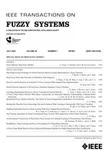版权所有:内蒙古大学图书馆 技术提供:维普资讯• 智图
内蒙古自治区呼和浩特市赛罕区大学西街235号 邮编: 010021

作者机构:Henan Univ Sci & Technol Sch Informat Engn Luoyang 471000 Peoples R China Henan Univ Sci & Technol Henan Key Lab Robot & Intelligent Syst Luoyang 471000 Peoples R China Henan Univ Sci & Technol Sch Informat Engn Luoyang 471000 Peoples R China Korea Univ Sch Elect Engn Seoul 136701 South Korea
出 版 物:《IEEE TRANSACTIONS ON FUZZY SYSTEMS》 (IEEE Trans Fuzzy Syst)
年 卷 期:2025年第33卷第5期
页 面:1402-1414页
核心收录:
学科分类:0808[工学-电气工程] 08[工学] 0812[工学-计算机科学与技术(可授工学、理学学位)]
基 金:National Natural Science Foundation of China [62203153, 62473130] Joint Fund of Science and Technology R&D Plan of Henan Province for Young Scientists Application Research Project of the Joint Fund of Science and Technology R&D Plan of Henan Province Technology Innovative Teams in University of Henan Province [23IRTSTHN012] National Research Foundation of Korea (NRF) - Korea government (Ministry of Science and ICT) [NRF-2020R1A2C1005449]
主 题:Indexes Optimal control Multi-agent systems Fuzzy systems Backstepping Upper bound Sun Stability criteria Safety Robots Actor-critic neural networks (NNs) containment control deferred output constraints (DOCs) multiagent systems (MASs) output mask scheme prescribed-time stability
摘 要:This article studies the adaptive prescribed-time fuzzy optimal containment control issue for multiagent systems (MASs) with deferred output constraints based on the reinforcement learning (RL) algorithm. Given that agents require confidential state messages, an output mask scheme is delicately synthesized to ensure that other agents cannot identify the true state message, potentially adding to the sophistication of the containment control process of MAS. Then, an adaptive prescribed-time fuzzy optimal containment control strategy is developed that counts on the masked state of neighboring agents. In addition, an auxiliary error via the shifting function is incorporated into the nonlinear mapping function to manage error constraints, not only avoiding the feasibility criteria but also realizing the unified control. Notably, an emerging intermediate variable is executed to tackle the issue of unknown control gains acting on the RL-based recursive design procedure. Moreover, the drawback of semiglobal boundedness of the error surface induced by dynamic surface control can be avoided with the aid of the novel Lyapunov-like energy candidate. With the assistance of the practical prescribed-time stability, it can be guaranteed that the original state value of each agent remains undisclosed, and the output of the followers can be centered on a convex hull made up of leaders within a prescribed time. Herein, the efficacy of the suggested tactic is exemplified through two illustrative examples.